Certified RapidResponse Author Level 3 Exam Questions and Answers
You are developing a worksheet that will be used to run a script through a form. For the script to work properly, you will need to pass information from two columns as script arguments.
Which two actions will accomplish this task? (Choose two.)
Choose 2 answers
You want to create a workbook command that deletes records in theHistoricalDemandActual table that are more than a year old. You want to perform this action automatically once a week, without having to manually run the command.
In this situation, which two statements are true? (Choose two.)
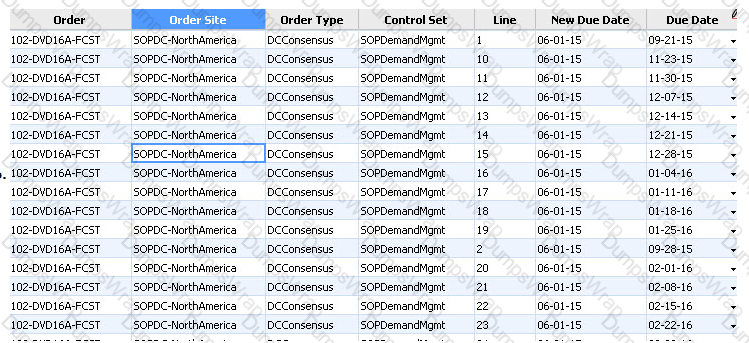
You want to create a workbook command that will modify the existing records on the worksheet shown in the graphic. You want the records to copy the date value in New Due Date to the DueDate field in each record.
What should you change in the worksheet to create the modify command?
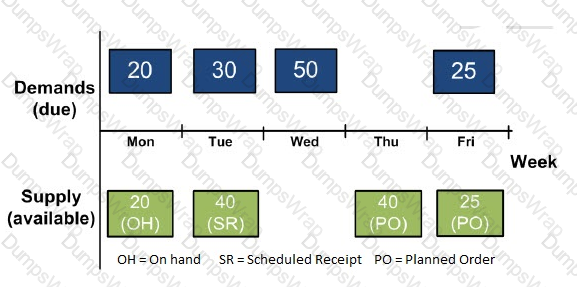
A part has several demands due in a particular week. All demands are the same priority. Available supplies are shown in the graphic. The control table settings for the OrderPriority.AllocationRule is FairShare and PlanningCalendars.AllocationCalendar is Week.
How much of the supply quantity on Thursday will be allocated to the Wednesday demand?
You are asked to restrict a worksheet so that users can only see data for the demand of the countries that they should have permission to see. A field has been added to the IndependentDemand table, which is a reference to a custom table called Country. Each user may have permission to see the demands from one or more countries, and each country can be seen by one or more users. They should be able to see data from multiple countries in the worksheet at the same time.
In this scenario, what should you do to enable this capability?
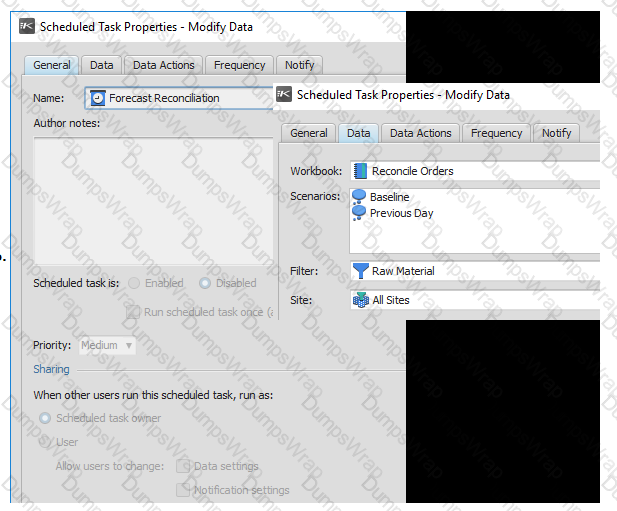
You shared your scheduled task, shown in the graphic, with a set of users who do not have access to all the resources used in the task.
In this situation, which statement is true?
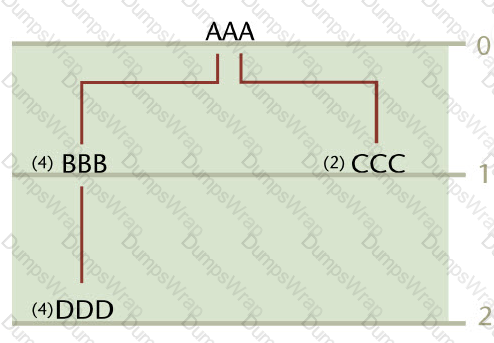
The Bill of Material structure is shown in the graphic. The quantity per for each component is shown in parentheses. Independent demand for 100 units of item AAA has been received. There are no ScheduledReceipt or OnHand records for any of the items; PartSource.OrderPolicy.OrderGenerationRule = Anytime.
What is the correct PegPart, DriverPart, and NeedQuantity found in the WhereConsumed table for item DDD?
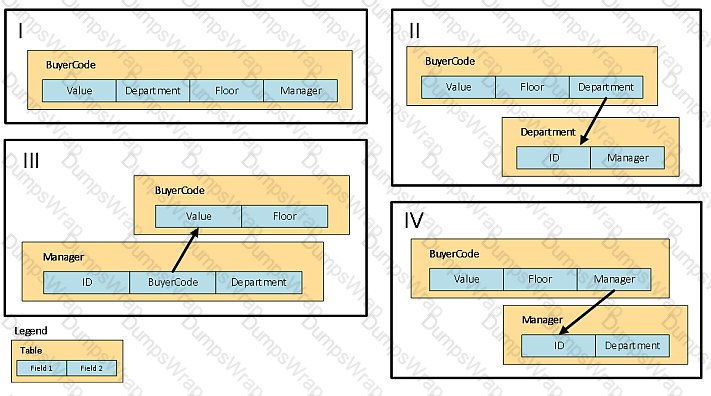
You want to define a custom data structure connecting BuyerCode to additional information: Manager, Department, and Floor. A manager might be responsible for more than one department. You expect that users will want to filter this information on combinations of each of those data elements.
Referring to the graphic, which data model structure should you use?
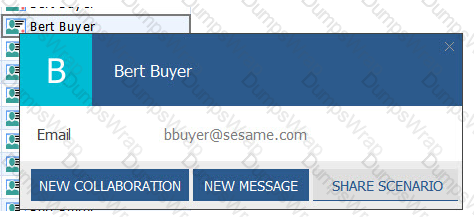
You want to identify the buyer responsible for the component part in a worksheet based on the BillofMaterial table. Additionally, you want to have the option of inviting that buyer to a collaboration, messaging that buyer, and sharing a scenario with them.
Which set of column expressions and configuration changes will enable this capability?

You have a new demand for 800 units of a product. SourceRule.AllotmentRule for this part is set to OnGoing.
Referring to the graphic, which planned order results will be created to satisfy this demand?
You are asked to create a worksheet that shows which process orchestration activity performers are late and how much they are late for each activity. There could be more than one performer per activity.
How would you accomplish this task?
Your suppliers need to receive a report listing their outstanding purchase orders. Each supplier should receive the report in the same format but it should only display the purchase orders associated with their supplier ID.
Based on this situation, which two actions will be required to support this requirement? (Choose two.)
Choose 2 answers
You remove an automation chain step that runs in parallel with two other steps.
What is the result of this action?
You are building a worksheet for supplier collaboration and you want to assign a profile variable, Suppliers, so each user can see data for their own list of suppliers.
You include an expression in your sheet reporting the ScheduledReceipt table:
Order.Supplier IN ListAsSet($Suppliers)
Which string would you enter for the Suppliers profile variable for a user that should see data for suppliers A, B and C?
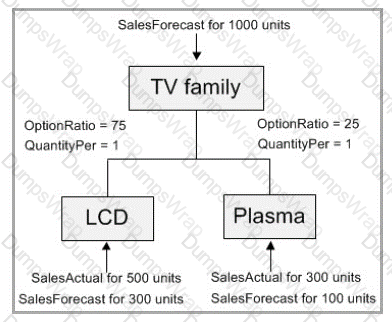
Referring to the graphic, the TV Family represents an MPSConfig planning BOM. No supply is available.
What will be the quantity of the planned order created for the TV family?
Customers sign in to view only their independent demands. The customer's User IDs are in a user group with the name of the customer to which they correspond. You want to create a single worksheet that allows customers to only view their independent demands within RapidResponse.
How would you accomplish this task?

You are asked to create a workbook that identifies the change in IndependentDemandAvailableDate in workdays from a child scenario to its parent.
Which worksheet properties shown in the graphic identifies the correct configuration and expression?
You have a report based on an InventoryTransfer table. Due to currency fluctuation, you are asked to report the difference between the future EffectiveUnitTransferCost and the cost to transfer it today.
Which expression will accomplish this task?

